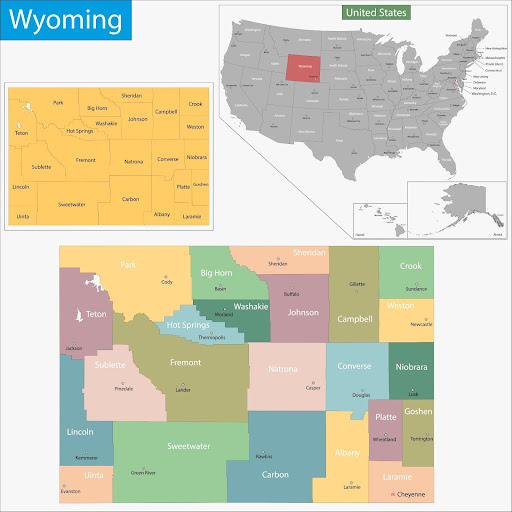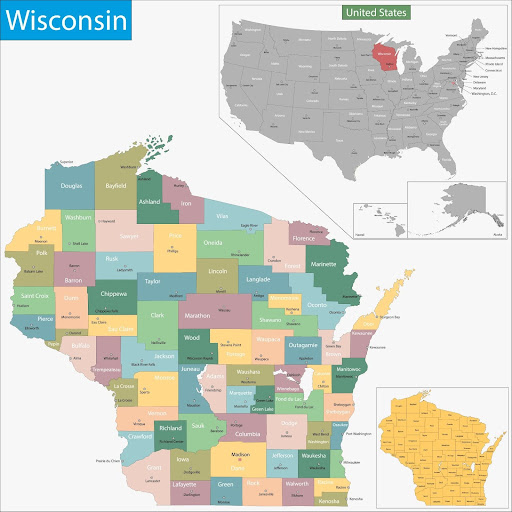Table of Contents
Colorado’s wildfire profile is as unpredictable as its elevation shifts. For fire investigators, that means no two scenes are the same. You might be walking an abandoned campfire ring at 10,000 feet one day, and the next, parsing wind-carried embers across suburban fencing in El Paso County. The terrain, fuels, and interagency structure demand precision and a whole lot of prep.
This guide lays out the operational landscape for wildland fire investigation in Colorado, including key agency contacts, regional fire behavior, training hubs, and where to track live incidents as they unfold.
Live Incident Updates & Maps
Use this live tool to track wildlife activity and incident updates across Colorado:
State Overview
Colorado is a study in vertical fire behavior. Elevation spans from 3,000 feet on the plains to over 14,000 feet in the Rockies, and with each rise comes a new fuel model, moisture regime, and ignition pattern.
- Eastern Plains: Fine, flashy fuels dominate. Fires spread fast and wide, especially under red flag conditions.
- Foothills & Montane Zones: Ponderosa pine and mixed conifer create vertical continuity and high spotting potential.
- High Elevation Forests: Dead trees from beetle infestations and dense fir forests can fuel intense wildfires that burn entire stands of trees.
- WUI Zones: Colorado has one of the fastest-growing wildland-urban interfaces in the country, increasing the complexity of fire suppression and investigation efforts.
Wildfire Season Timeline
Colorado experiences a prolonged and increasingly year-round fire season, but three key windows dominate:
- Spring (March–May): Wind-driven grassfires and escaped burns rise with snowmelt. Many ignitions are debris-related or agricultural in nature.
- Summer (June–August): Lightning ignitions spike in mountainous terrain, especially post-monsoon. Fuels cure quickly after early-season rains.
- Fall (September–November): Warm, dry downslope winds (especially the dreaded Chinooks) set the stage for fast-moving fires. Investigators often see infrastructure-related or accidental human-caused fires during this time.
Key State Agencies Involved
Colorado’s wildland fire response is layered, with different agencies owning different slices of the incident pie.
- Colorado Division of Fire Prevention and Control (DFPC): The state’s lead agency for wildland fire suppression and investigation. DFPC manages state engines, helitack, aviation assets, and coordinates statewide mutual aid. Investigators often work with their Fire Management Officers (FMOs) and Cause and Origin specialists.
- Colorado State Forest Service (CSFS): Provides technical support, fuels mitigation, and prevention education. While not a direct suppression agency, CSFS plays a role in pre-incident planning and post-fire analysis.
- U.S. Forest Service (USFS): Manages millions of acres across forests like Pike-San Isabel, Arapaho-Roosevelt, and White River. All investigations on federal lands follow NWCG and USFS LEI protocols.
- Bureau of Land Management (BLM): Oversees large tracts of dryland in western Colorado. Investigators should coordinate early with BLM Fire Management and Law Enforcement.
- Tribal & Municipal Authorities: Colorado is home to the Southern Ute and Ute Mountain Ute Tribes. Both maintain independent fire resources and often partner on investigations.
Local Wildland Firefighting Resources
Much of Colorado’s initial attack capacity lies with local agencies, especially in rural and mountainous counties. Below is a quick look at the resources locally available in Colorado.
List of Local/State/Federal Fire Response Agencies
Colorado’s wildland fire response is distributed across multiple jurisdictions, with each agency bringing different capabilities to the table:
- Volunteer Fire Departments (VFDs): Over 100 departments statewide, many serve WUI zones and provide first-on-scene intel. Some have wildland-specific units.
- County Sheriff’s Offices: Statutory authority over wildfires in unincorporated areas unless delegated. Investigators often coordinate with sheriffs on ignition source interviews and scene security.
- Type 3 Incident Management Teams (IMTs): Activated regularly for complex multi-jurisdictional fires. Their Incident Commanders (ICs) may call in fire investigators or request state/federal assistance.
Contact Numbers and Emergency Links
- To Report a Wildfire: Dial 911
- DFPC Wildfire Info & Dispatch: dfpc.colorado.gov
- Rocky Mountain Area Coordination Center (RMACC): 303-445-4300 | https://gacc.nifc.gov/rmcc
- Colorado Wildfire Risk Viewer: https://www.coloradowildfirerisk.com
Training & Volunteering
Wildland fire training in Colorado is robust and NWCG-compliant, with multiple regional academies and seasonal opportunities.
NWCG-Approved Academies and Centers
- Colorado Wildland Fire & Incident Management Academy (CWFIMA): Held in both winter (January) and summer (July) at rotating locations across the state. Offers S-130/190, L-280, and advanced fire investigation tracks (FI-210).
- DFPC Training Division: Provides courses across Colorado, often in coordination with local departments. Their Fire Investigation section also offers customized cause determination workshops for agency personnel.
- Federal Fire Training Centers: Including those managed by the USFS and BLM in Grand Junction, Durango, and Fort Collins.
Volunteer and Seasonal Training Opportunities
- Emergency Firefighter (EFF) Program: DFPC and many counties hire and train seasonal wildland firefighters each spring. EFFs receive red card training and often support investigation units as part of suppression mop-up or patrol.
- Rural VFD Support: DFPC provides equipment, PPE, and training to under-resourced departments, many of which serve high-risk WUI zones.
- CSFS Fuels Crew Internships: For those looking to combine mitigation work with suppression exposure.
Stay Informed on Colorado’s Wildland Fire Landscape
Colorado’s wildfire landscape is evolving fast. With earlier snowmelt, longer dry spells, and more people moving into the WUI, fire behavior is trending more erratic and more destructive.
As an investigator, your edge is knowledge. That means more than just knowing how to read burn patterns. It’s about staying current on policy shifts, understanding state dispatch chains, and working shoulder-to-shoulder with suppression crews. Learn the terrain. Build the relationships. And don’t assume this year will look anything like the last.
FAQs
How do I report a wildfire in Colorado?
Dial 911 immediately. You can also contact the RMACC Dispatch Center directly at 303-445-4300 for federal or large multi-jurisdictional incidents.
Can I conduct a controlled burn in Colorado?
Yes, but you’ll need local permission. Contact your county sheriff’s office or local fire protection district. During high fire danger periods, burn bans may override issued permits.
Who investigates wildfires in Colorado?
Investigation responsibility depends on land ownership. DFPC investigates on state and private land (unless delegated to counties). USFS or BLM handles federal lands. Often, collaboration occurs across agencies for shared or high-complexity fires.










